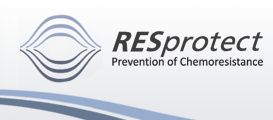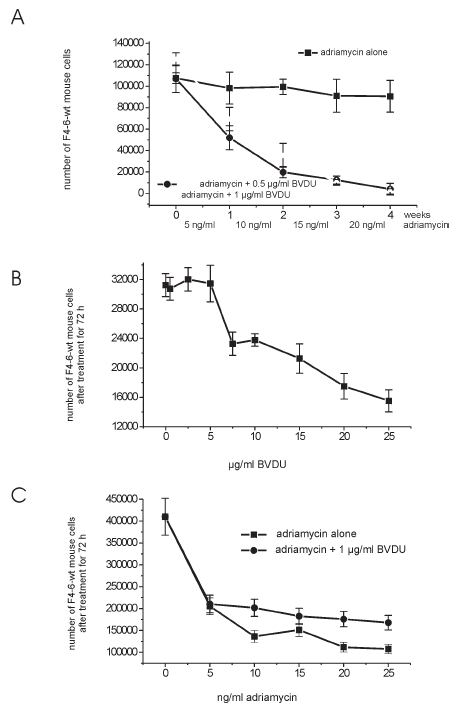| Prevention of adriamycin-induced mdrl gene amplification and expression |

|

|

|
Page 2 of 7
Development of multidrug resistance (MDR) in hamster, mouse and human cell lines is frequently associated with mdr-gene amplification, and the level of drug resistance is often correlated with the level of gene amplification (Gottesman, 1993). mdr-Gene amplification in association with multidrug resistance in mice and rats has been observed not only in vitro, but also in vivo. Mouse leukemia cells, selected in vivo for resistance to anthracyclines, have developed mdr-gene amplification (Demidova et al., 1987; Gudkov et al., 1991; Volm et al., 1991; Schimke et al., 1986). As it is generally agreed that the first steps of gene amplification and recombination are the same (Schimke et al., 1986; Volkert & Broach, 1986; Wahl, 1989), both processes may be causally related. To test this hypothesis, in previous experiments co-recombinogens and anti-recombinogens were studied for their ability to enhance or suppress the cytostatica induced formation of SV40 amplification. There could be observed a very strong correlation between both effects (Fahrig & Steinkamp-Zucht, 1996). (E)-5-(2-bromovinyl)-2´-deoxyuridine (BVDU) was the only substance within the group of anti-recombinogens with likely clinical significance (Fahrig, 1996). Therefore, this substance was selected for the present in vitro-experiments using a mouse tumor cell line that is known to develop adriamycin resistance corresponding to mdr-gene amplification. F4-6 tumor cells are Friend virus transformed mouse erythroleukemia cells (Ostertag et al., 1972). Cell line F4-6wt shows the wild type, i.e., is drug sensitive and has no increased mdr-gene expression and amplification. F4-6 cells were treated with stepwise enhanced doses of adriamycin. In the course of these experiments the cell population acquired resistance against adriamycin. While 20 ng/ml adriamycin showed strong toxic effects in sensitive cells, the same dose was tolerated at the end of the long-term experiment. In parallel experiments, adriamycin was given together with 0.5 or 1 µg/ml BVDU (Fig. 1 A). At these doses, BVDU had no toxic effects when given alone (Fig. 1 B). It is apparent that BVDU prevented the formation of resistance against adriamycin treatment. The tumor cells remained sensitive against adriamycin treatment.
|
|||||||||



 Figure 1:
Figure 1: